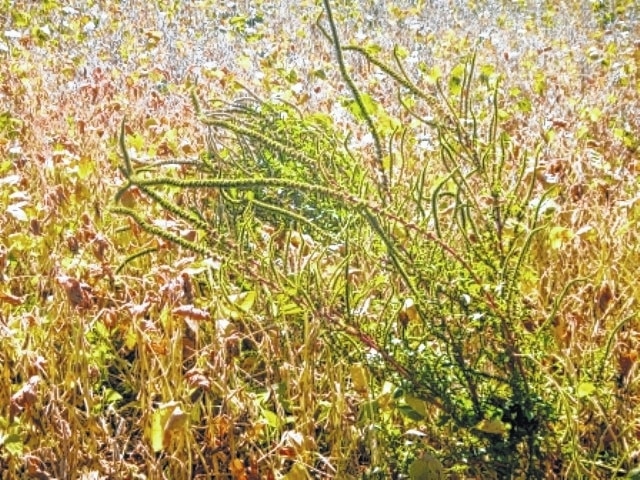
This is a great time of year to scout soybean fields to see which weeds broke through your herbicide program and consider what changes need to be made in future years. Marestail has been a big struggle for most farmers since it has developed resistance to some herbicides followed closely by giant ragweed. The next family of weeds that we need to keep an eye on is the pigweed family.
States to the west have seen resistance in waterhemp for a few years now and we are starting to see some issues in Ohio as well. There may be resistance in some populations of smooth and redroot pigweed. We know Palmer amaranth has resistance to some herbicides and is difficult to control even in populations that are not resistant due to its late emergence. More and more cases of Palmer have been found in fields across Ohio so it remains crucial to keep an eye out for this weed to prevent it spreading even more.
Identification is important in deciding how to control weeds in fields. If you think you have waterhemp resistance in a field, you can send samples to the University of Illinois Plant Clinic. For a $50 fee they will test for herbicide resistance. This may affect your seed buying decisions this fall if you do have resistance to glyphosate or PPO inhibitors. If there is a large population of redroot pigweed in a field that has continually been a problem over the last few years, it may be resistant. The OSU Weed Science lab will test this if you are able to collect seed from the plants. Bring it in to the Champaign Co Extension Office and I will get it to them.
The difference between smooth and redroot pigweed versus waterhemp and Palmer is the presence of hairs on the stems and leaf surfaces. Smooth and redroot will have these hairs while waterhemp and Palmer will not. Distinguishing between waterhemp and Palmer is a little more challenging. Palmer leaves are more round and oval shaped where waterhemp leaves are long and linear. The petiole (stem of the leaf) on Palmer is typically longer than the leaf itself where the petiole of waterhemp will be shorter than the leaf.
If weeds reach maturity and produce seed heads, Palmer seed heads are much longer than redroot or smooth pigweed, reaching up to 3 feet. This sometimes causes people to think common mullein is Palmer because of its long seed head. However, common mullein does not look like pigweed and there is typically only one vertical seed head per plant. Pigweeds and waterhemp have multiple seed heads that come out of the plant with a wiry look, not perfectly vertical. The difference between waterhemp seed heads and those of Palmer is that the Palmer seed heads are prickly to the touch.
As you are harvesting, if you run across anything that looks like Palmer, do not run it through the combine. This will spread the seed not only within the field but to other fields harvested by that combine as well. This weed is large, aggressive and can go from a couple of plants to complete field destruction in a couple of years as one plant can easily produce half a million seeds. Take time to ID the plant before harvesting. If it is Palmer, cut the plant off at the ground and bag it up to remove it from the field. This will prevent any further spreading of the seeds.
When purchasing a used combine, make sure you know where the combine came from. Even if it is a local dealership, it could have come from a southern state where Palmer is prevalent. Combines can be fumigated with methyl bromide to kill the seed but it may be difficult to find someone to do this.
Resources: OSU Weed Science Palmer page: http://u.osu.edu/osuweeds/super-weeds/palmer-amaranth/
Pigweed ID video: http://agcrops.osu.edu/newsletter/corn-newsletter/rainy-day-entertainment-%E2%80%93-get-speed-pigweed-id
Univeristy of Illinois Plant Clinic sample form: http://web.extension.illinois.edu/plantclinic/downloads/WaterhempForm.pdf


